
2013, The Year That Was: Science + Technology

This article was originally published at The Conversation. The publication contributed the article to LiveScience's Expert Voices: Op-Ed & Insights.
You can cram a lot of knowledge into 12 months. Since this time last year we’ve learnt that bees, like people, have a “too-hard basket”; how dinosaur necks got so long; that, in theory, it’s possible to fit an astounding 1,000 terabytes of data onto a single DVD; and how Antarctic extremophiles thrive in water so salty it stays liquid down to –20C.
A little closer to home, the Australian public’s ego was dealt a bit of a blow when we found out we seem to be getting dumber – well, depending on how you define intelligence. But thanks to the National Broadband Network debate, we all know the differences between Labor’s fibre-to-the-premises plan (which most of us thought was pretty good) and the Coalition’s fibre-to-the-node policy.
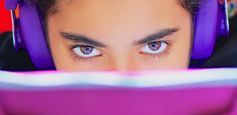
Ex-NSA employee Edward Snowden’s revelations, the world is now aware the NSA has direct access to the big internet companies through PRISM, the contents of our chats and emails with XKeyscore, busting encryption with Sigint and hacking into our smartphones – including the “uncrackable” BlackBerry and probably even the newest iPhone 5, complete with fingerprint technology – and more.
The FBI managed to have a win during the US government shutdown: Silk Road, an online marketplace for the buying and selling of illegal goods and services, was taken down … well, for a while anyway. The void’s been filled with plenty of places to spend your Bitcoins (and other cryptocurrencies).
Speaking of illegal substances, it’s been a shocking year for the field of sports science. It all kicked off in January when ex-golden boy Lance Armstrong finally admitted to doping.
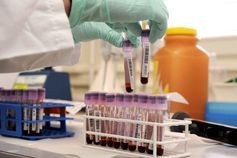
Then came what seemed like a spate of scandals in a wide range of sports: cyclist Stuart O'Grady admitted to using EPO during his career, the Essendon Football Club’s doping investigation brought peptides into everyday language, the Cronulla Sharks allegedly dabbled in thymosin beta-4 and six athletes – including sprinters Tyson Gay and Asafa Powell – tested positive to oxilofrine.
Sign up for the Live Science daily newsletter now
Get the world’s most fascinating discoveries delivered straight to your inbox.
Most of this happened mid-year so you might need to brush up on your sports science drugs. Wondering where colostrum comes from, or forgotten which (apparently) performance enhancing substance is extracted from pig brains? Check out our sports science drugs glossary and while you’re there, think about how much it would cost to catch every single drug cheat.
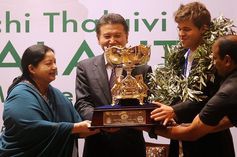
In November we saw 22-year-old Norwegian Magnus Carlsen beat Indian grandmaster Vishy Anand, more than 20 years his senior, in the World Chess Championship. (A bit of bad news if you’ve set your sights on the next year’s crown – if you’re old enough to read this it’s probably too late to get good enough to take on Carlsen.)
Physics and astronomy were also big winners this year. Mars copped a fair bit of action with an Indian mission blasting off to sniff around for methane with NASA’s Martian Atmospheres and Volatiles Evolution mission (MAVEN) hot on its heels … and of course, the rovers are still trundling around, testing the planet for signs of life and early oceans.
Earth-bound telescopes yielded insights into supermassive black holes and fast radio bursts while the Hubble space telescope continued to beam back stunning pictures of the universe as it was billions of years ago (although space observatory Kepler ran into a few problems in May).
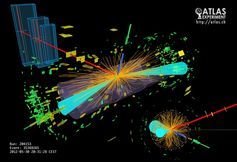
Groundbreaking discoveries weren’t confined to the depths of space; scientists at CERN confirmed, in March, that experiments in the Large Hadron Collider (LHC) did in fact yield Higgs bosons (then powered down for a couple of years for repairs).
In October, the 2013 Nobel Prize in Physics was awarded to Peter Higgs and François Englert for postulating the presence of the particle back in the 1960s, and, in December, the LHC showed how the Higgs boson decays.
Will the International Linear Collider, the plans of which were unveiled in June, give up similar secrets when it’s built in a few years' time? And let’s not forget about the IceCube Neutrino Observatory, buried deep in the Antarctic ice, which detects the universe’s slipperiest particles is still operational.
Of course, without our fantastic authors we wouldn’t have these articles for you. A couple of notable mentions should go to:
- Rob Brooks, who won the Australian Government Eureka Prize for Promoting Understanding of Australian Science Research
- Matthew Todd, leader of the Open Source Malaria consortium in Sydney, who won an Accelerating Science Award which honours researchers who have used, applied or remixed scientific research, and published through open access to make a difference in science, medicine, business, technology or society as a whole.
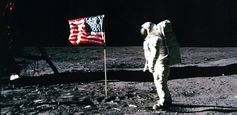
If you fancy big reads these holidays, try these series on the moon, animals in research and the science of medical imaging, or get inspired with these first-person pieces from 2013 Prime Minister’s Prizes for Science winners.
Given the incredible research and discoveries from the past 12 months, the mind boggles at what’s in store for 2014. So if you’re a researcher who’d like to write for us, or just have a snazzy story idea, drop me a line any time.
Have a refreshing break!
Belinda Smith, Deputy Science + Technology editor
Top ten Science + Technology stories by readership in 2013:
1) More data storage? Here’s how to fit 1,000 terabytes on a DVD 2) Teleportation just got easier – but not for you, unfortunately 3) Bike helmets: an emergency doctor’s perspective 4) Does iOS 7 make you ill? Give ‘simulator sickness’ the heave 5) Penis size may be driven by women (oh, and it matters) 6) Dude, where’s my data? Life after Google Reader 7) Explainer: what is déjà vu and why does it happen? 8) Seeing red: why cyclists ride through traffic lights 9) What a turn-off: why your phone must be powered down on flights 10) Labor and Coalition broadband policies – what’s the difference?
… and finally, a cat-in-a-box physics experiment.
This article was originally published at The Conversation. Read the original article. The views expressed are those of the author and do not necessarily reflect the views of the publisher. This version of the article was originally published on LiveScience.












